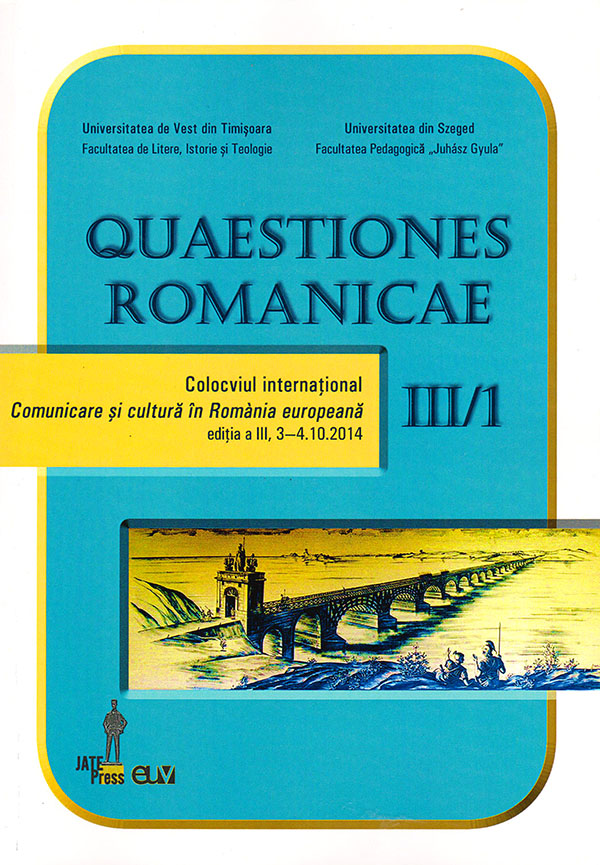Le prime traduzioni in romeno dell'Inferno di Dante: riferimenti culturali e traduttivi
Abstract: (The first translations of Dante's Inferno in Romanian: cultural and translational references) Like the Romanian specialist in Translation Studies Georgiana Lungu-Badea observes in her book Un capitol de traductologie românească. Studii de istorie a traducerii [A chapter of Romanian Translation Studies. Studies of history of translation] (III) the period 1840-1900, for the Romanian history of translation, marks a time of a search for identity, involving the target language. Considering this, the translation of fragments from Dante's Inferno becomes a phenomenon to be held in consideration by the researchers and which investigation could provide interesting suggestions not only for the history of translation from Italian to Romanian but also for the history of Romanian literary language. Studying the achievements of that period's translators is useful also for designing the map of Dante's fortune and reception in the Romanian cultural space. The interest for the translation of his poem in particular, but also for his literary ideas and his aesthetics in general, shown by numerous Romanian intellectuals in the second half of the 19th century, justifies entirely the necessity of analyzing not only the results of the translation process but also the causes of this operation. Who are the translators and what are their motivations? For whom are they translating? The editorial policies influenced the translational activity? Here are some of the questions that are aimed to be answered in this research by using the historical analysis, of the literary, linguistic and translational data, in correlation with cultural anthropology.
Keywords: history of translation, Romanian literary language, Dante's Inferno, literary translation, cultural history.
Riassunto: Nella storia della traduzione moderna in romeno, il periodo 1840-1900, così come osserva la studiosa romena di traduttologia Georgiana Lungu Badea in Un capitol de traductologie românească. Studii de istorie a traducerii [Un capitolo di traduttologia romena. Studi di storia della traduzione] (III), viene segnato dalle ricerche identitarie della lingua di arrivo. In questa ottica, la traduzione di brani dell'Inferno dantesco assume le caratteristiche di un fenomeno la cui analisi potrebbe fornire dei temi di riflessione sia per la storia della traduzione dall'italiano al romeno, sia per la storia della lingua letteraria romena. Dedicarsi allo studio di tali imprese traduttive serve anche a tracciare la mappa della ricezione dell'opera e della figura di Dante nello spazio culturale romeno. L'interesse traduttivo, oltre a quello di tipo letterario ed estetico, mostrato a partire dalla seconda metà del XIX secolo da parte di un numero significativo di intellettuali romeni nei confronti del poema dantesco, giustifica pienamente la necessità di analizzare non soltanto i risultati del processo traduttivo, ma anche le cause sottostanti a tale azione. Chi sono i traduttori e quali sono le loro motivazioni? Per chi stanno traducendo? Le politiche editoriali hanno influito sull'attività traduttiva? Ecco alcune delle domande alle quali si tenterà di fornire una risposta, mediante l'analisi storica dei fenomeni letterari, linguistici e traduttivi, in stretto rapporto con l'antropologia culturale.
Parole chave: storia della traduzione, lingua romena letteraria, l'Inferno dantesco, traduzione letteraria, storia culturale.
